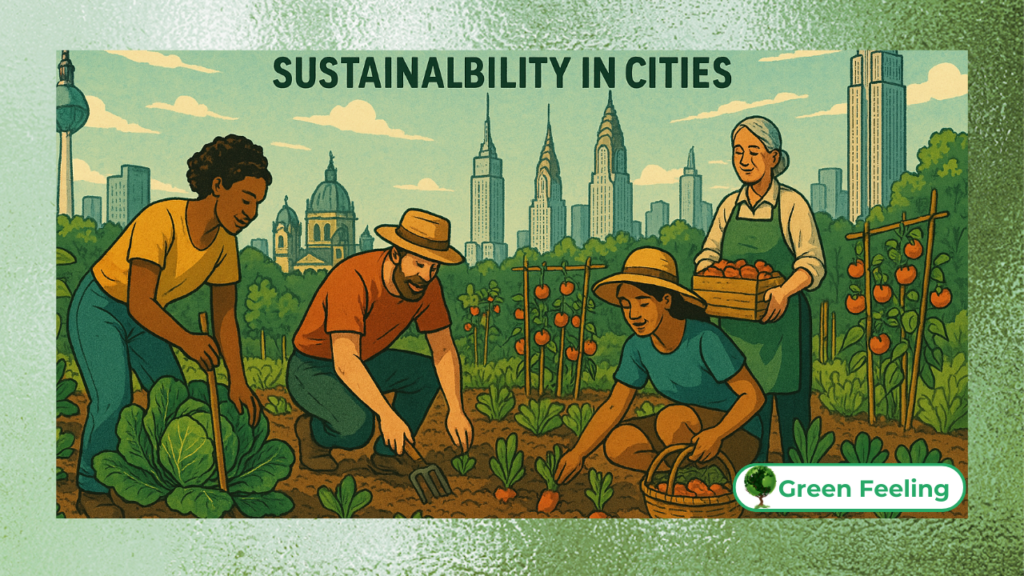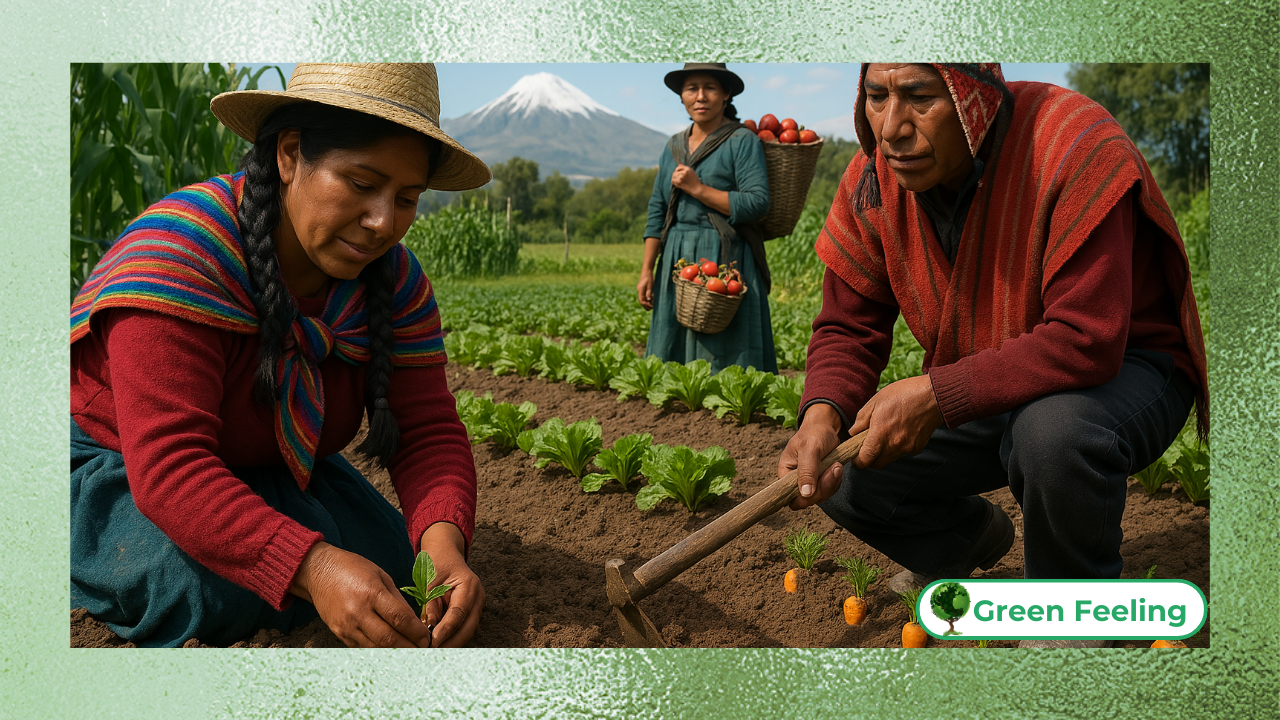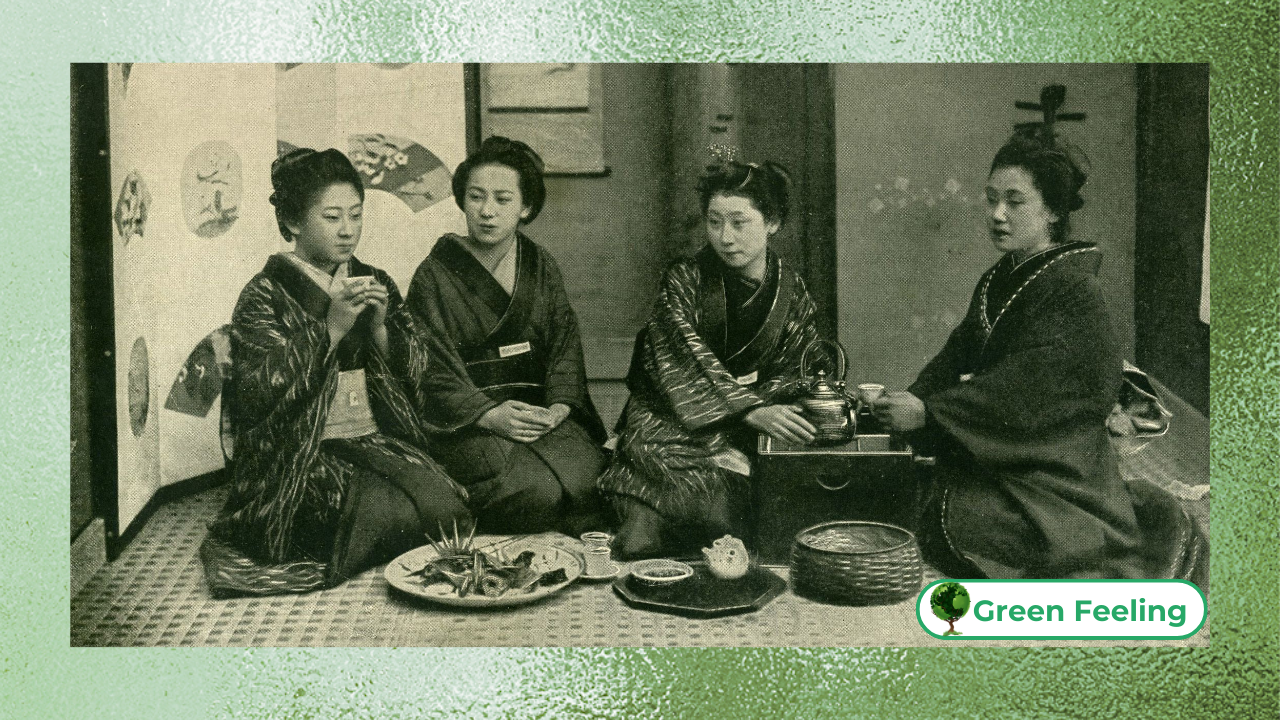Urban Agroecology: Community Gardens and Sustainability in Cities
Urbanization has brought numerous environmental and social challenges, including food insecurity, soil degradation, and a growing disconnect between people and nature.

In response, urban agroecology has emerged as an innovative solution, fostering community gardens that integrate sustainability, education, and social inclusion.
These gardens do more than just provide fresh, organic produce—they strengthen community bonds, reduce urban environmental impact, and promote ecological practices.
In this article, we will explore how urban agroecology transforms vacant lots into productive green spaces, the key cities leading this movement, and the cultural and artistic dimensions of urban farming.
The Rise of Urban Agroecology
Urban agroecology is a practice that applies ecological principles to agriculture within cities. Unlike traditional farming, it emphasizes sustainability, biodiversity, and community participation.
By utilizing small plots, rooftops, and even vertical spaces, urban dwellers can grow food while reducing their carbon footprint.
Community gardens are at the heart of this movement. They serve as hubs for education, where people learn about composting, water conservation, and organic farming.
Additionally, these spaces often become platforms for cultural exchange, art installations, and grassroots activism.
Benefits of Community Gardens in Cities
The advantages of urban agroecology extend far beyond food production. Here are some key benefits:
- Environmental Sustainability:
- Reduces urban heat islands through vegetation.
- Improves air quality by absorbing CO₂.
- Promotes rainwater retention, reducing flood risks.
- Social and Cultural Impact:
- Strengthens neighborhood ties through collective work.
- Provides educational opportunities for schools and local groups.
- Encourages artistic expression through garden design and murals.
- Economic Advantages:
- Lowers grocery expenses for low-income families.
- Creates green jobs in urban farming initiatives.
As noted by Dr. Laura Lawson, author of City Bountiful: A Century of Community Gardening in America:
“Community gardens are not just about growing food—they are about growing communities.”
+ Sustainable Practices in Asian Rural Architecture
Cities Leading the Urban Agroecology Movement
Several cities worldwide have become models for successful urban agroecology projects. Below is a table highlighting three key examples:
| City | Notable Project | Key Impact |
| Berlin | Prinzessinnengärten |
Revitalized vacant lots into thriving community gardens.
|
| New York | Brooklyn Grange Rooftop Farms |
Pioneered large-scale rooftop agriculture.
|
| São Paulo | Horta das Corujas |
Promotes food security in dense urban areas.
|
Berlin, Germany – Prinzessinnengärten
This project transformed an abandoned lot into a vibrant urban farm, incorporating cultural events and workshops. It demonstrates how agroecology can revive neglected spaces.
New York, USA – Brooklyn Grange
As one of the largest rooftop farms in the world, Brooklyn Grange produces over 50,000 lbs of organic food annually while hosting educational programs.
São Paulo, Brazil – Horta das Corujas
A community-driven initiative, this garden provides fresh produce in a city where food deserts are a pressing issue.
+ What Is Urban Greening? Discover the cities of the future
The Intersection of Agroecology and Art
Urban gardens are not just functional—they are also spaces of creativity that blend ecological awareness with artistic expression. Many incorporate:
- Murals and sculptures made from recycled materials that tell stories of sustainability
- Performance spaces for music, poetry slams, and theater productions with environmental themes
- Interactive installations that educate visitors on sustainability through immersive experiences
- Seasonal art exhibitions that change with planting cycles
- Workshops teaching how to create art from garden materials
These creative elements transform utilitarian spaces into vibrant cultural hubs that attract diverse audiences.
The gardens become living galleries where nature and human creativity coexist symbiotically.
Some projects even collaborate with local art schools, creating residency programs where students develop site-specific works.
This artistic dimension helps communicate complex ecological concepts in accessible, emotionally resonant ways, making sustainability feel personal and immediate rather than abstract.
As artist and activist Fritz Haeg once said:
“Gardens are the most radical form of protest in a world dominated by concrete.”
This fusion of agriculture and art makes urban gardens powerful tools for cultural expression and social change, proving that environmentalism can be beautiful, engaging, and deeply meaningful to urban communities.
+ What Is Urban Greening? Discover the cities of the future
Challenges and Future of Urban Agroecology
Despite its numerous benefits, urban agroecology faces significant obstacles that require innovative solutions:
- Land scarcity in densely populated cities drives creative adaptations like vertical farms on building facades
- Zoning laws often lag behind urban farming needs, requiring policy advocacy
- Funding limitations make it difficult to scale successful pilot programs
- Soil contamination in post-industrial areas demands remediation efforts
- Gentrification risks when gardens increase neighborhood desirability
However, cities are developing creative responses to these challenges. Some municipalities have created urban agriculture zoning categories, while others offer tax incentives for green roofs.
Technological advances in hydroponics and aquaponics allow farming in spaces previously considered unusable.
Community land trusts are emerging to protect garden spaces from development pressures.
The future likely holds more integration between urban farming and smart city technologies, with sensors optimizing water use and apps connecting growers with surplus produce to food-insecure communities.
As climate change intensifies, these resilient food systems will become increasingly vital to urban survival.
The movement is also gaining institutional support, with some universities now offering degrees in urban agriculture and cities incorporating food production into climate action plans.
+ Vertical Gardens: The Green in Urban Spaces
What Do You Think About Urban Agroecology: Community Gardens and Sustainability in Cities?
Urban agroecology represents one of the most promising paradigms for creating livable, resilient cities in the 21st century.
These initiatives demonstrate that concrete jungles can be transformed into productive ecosystems that feed both bodies and souls.
Beyond their practical benefits, community gardens serve as democratic spaces where people from all backgrounds can collaborate, learn, and create together.
+ The Gods of Agriculture: Myths That Celebrate Sustainable Cultivation
Conclusion
The movement challenges conventional notions of urban land use, proving that vacant lots and rooftops hold tremendous potential when viewed through an ecological lens.
Perhaps most importantly, these spaces foster a much-needed reconnection between urban dwellers and the natural systems that sustain life.
In an era of climate crisis and social fragmentation, urban agroecology offers a hopeful vision of what cities could become – places where sustainability is woven into the fabric of daily life through beautiful, community-created spaces.
Have you visited an urban farm in your city? Could you imagine volunteering at or even starting a community garden?
The movement thrives on participation, and every new gardener helps grow this quiet revolution. These spaces remind us that even in the most built environments, life finds a way – especially when people come together to nurture it.
References:
- Lawson, L. (2005). City Bountiful: A Century of Community Gardening in America. University of California Press.
- Haeg, F. (2008). Edible Estates: Attack on the Front Lawn. Metropolis Books.
- Data from Brooklyn Grange, Prinzessinnengärten, and Horta das Corujas official reports.






